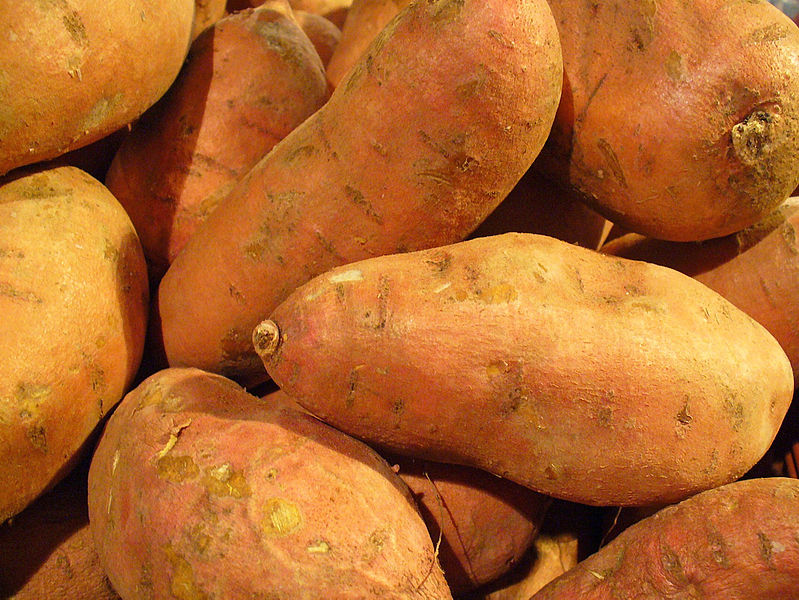Science News
Sweet Potato Travelers
January 29, 2013

Sweet potatoes don’t get a lot of credit. Did you know that, according to Wikipedia (a highly trusted source, of course), “the sweet potato ranked highest in nutritional value” among all vegetables in a 1992 study?
And that’s not all, according to a more recent study (last week, actually), sweet potatoes may tell us about early human exploration.
The sweet potato originates in South America, but the plant predates European explorers in Oceania. To many historians, this has always been a mystery. When did it get there? How? Natural seed dispersal? Humans?
A study in the 1970s by a Hawaiian researcher hypothesized that the sweet potato was first dispersed by Polynesian voyagers between 1000 and 1100, then by Spanish explorers heading from Mexico to the Philippines in 1500, and finally, by Portuguese traders traveling from Central America to Indonesia around the same time.
Called the tripartite hypothesis, the theory relied on archeological and linguistic evidence (the sweet potato is called kuumala in Polynesian languages, and kumara, cumar or cumal in Quechua speakers in South America). Now, French scientists are throwing genetic evidence into the mix.
The researchers analyzed 1,245 sweet potato samples from Central and South America as well as Oceania and a few from Southeast Asia and Madagascar. While most were modern plants, around 50 were historical herbarium specimens. And while the modern samples provide little evidence of early plant movement, the historical samples provide strong genetic support of the hypothesis, especially the first movement by Polynesian voyagers.
This stunning result implies that these voyagers may have traveled 5,000 miles or more across the open ocean!
The research was published last week in the Proceedings of the National Academy of Sciences. More information on the Polynesian travelers can be found here.
Image: Llez/Wikipedia